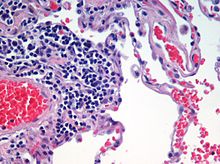**Plant Tissue:**
– Epidermis
– Vascular tissue (xylem and phloem)
– Ground tissue
– Meristematic tissues (primary and secondary meristem, apical, lateral, and intercalary meristem)
– Permanent tissues (simple and complex permanent tissues, parenchyma, collenchyma, sclerenchyma)
**Plant Tissue Functions:**
– Parenchyma: Support, food storage, photosynthesis, aerenchyma in aquatic plants, water storage in xerophytes
– Collenchyma: Tensile strength, mechanical support, sugar manufacturing and storage, presence in hypodermis of stems and leaves
**Xylem Tissue:**
– Responsible for water and inorganic solute conduction
– Comprises tracheids, vessels, fibers, and parenchyma
– Organized in a tube-like fashion with vessel members open at each end
– Xylem parenchyma cells are part of xylem tissue
**Phloem Tissue:**
– Carries dissolved food substances throughout the plant
– Consists of sieve tubes, companion cells, fibers, and parenchyma
– Sieve tubes are formed from sieve-tube members with small pores called sieve plates
– Transports food materials in plants
**Animal Tissue:**
– Connective, muscle, nervous, and epithelial tissues
– Form organs in animals
– Epithelium acts as a barrier between external environment and organs
– Connective and muscular tissues derived from mesoderm, nervous tissue from ectoderm
**Epithelial Tissues:**
– Cover organ surfaces and function in secretion, excretion, and absorption
– Provide protection and waste elimination
– Secrete enzymes and hormones
– Types include squamous, cuboidal, and columnar epithelium
**Connective Tissue:**
– Cells separated by extracellular matrix
– Matrix can be liquid or rigid, gives shape to organs
– Examples: blood, bone, tendon, ligament, adipose, areolar tissues
– Classified into fibrous, skeletal, and fluid types
**Muscle Tissue:**
– Active contractile tissue producing force and motion
– Types: smooth, skeletal, and cardiac muscle
– Smooth muscle lacks striations and contracts slowly, skeletal muscle contracts rapidly and is attached to bones
**Nervous Tissue:**
– Central and peripheral nervous system cells
– Forms brain, spinal cord, cranial nerves, spinal nerves, and motor neurons
– Essential for transmitting electrical signals
**Mineralized Tissues:**
– Incorporate minerals into soft matrices
– Provide structural support and protection
– Found in both plants and animals
**History:**
– Xavier Bichat introduced the concept of tissue in anatomy
– Proposed organs are collections of different tissues
– Distinguished 21 elementary tissues
– Considered a pioneer in histology
– Contributed to the understanding of human anatomy
This article needs additional citations for verification. (February 2019) |
In biology, tissue is an assembly of similar cells and their extracellular matrix from the same embryonic origin that together carry out a specific function. Tissues occupy a biological organizational level between cells and a complete organ. Accordingly, organs are formed by the functional grouping together of multiple tissues.

Biological organisms follow this hierarchy:
Cells < Tissue < Organ < Organ System < Organism
The English word "tissue" derives from the French word "tissu", the past participle of the verb tisser, "to weave".
The study of tissues is known as histology or, in connection with disease, as histopathology. Xavier Bichat is considered as the "Father of Histology". Plant histology is studied in both plant anatomy and physiology. The classical tools for studying tissues are the paraffin block in which tissue is embedded and then sectioned, the histological stain, and the optical microscope. Developments in electron microscopy, immunofluorescence, and the use of frozen tissue-sections have enhanced the detail that can be observed in tissues. With these tools, the classical appearances of tissues can be examined in health and disease, enabling considerable refinement of medical diagnosis and prognosis.
